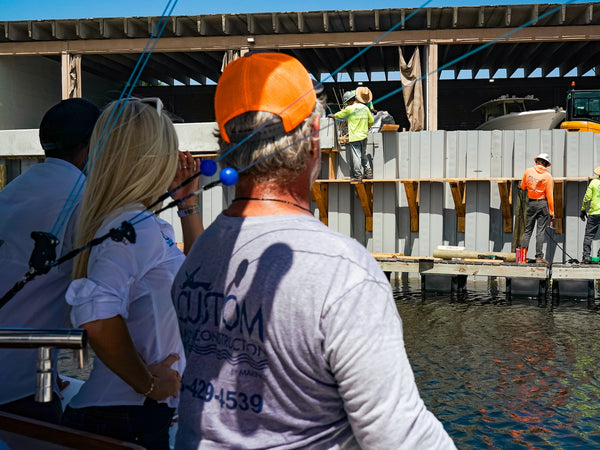CMC are experts in building and installing secure foundations for marine and waterfront projects.
PILE DRIVING



WE KNOW THE METHOD
No matter how we place support into your seabed, CMC are experts in impact, vibratory, and pressing driving.



PILE DRIVING EXPLAINED:
Marine pile driving isa construction process that involves driving piles, typically made of steel, concrete, or timber, into the seabed to create foundations for structures like docks, piers, and offshore platforms.This technique provides stable support in marine environments where the seabed soil may not be strong enough to bear the load of the structure.
Key aspects of marine pile driving:
PURPOSE: Pile driving creates a deep foundation for marine structures, transferring the load to more stable soil or bedrock below.
MATERIALS: Common pile materials include steel (pipe piles, sheet piles), concrete (pre-stressed, spun cast), and timber
METHODS: include Impact driving: Using a hammer (diesel, hydraulic, or air/steam) to repeatedly strike the pile; Vibro driving: Utilizing a vibratory hammer to vibrate the pile into the ground; Pressing: Driving piles into the ground by pushing them with hydraulic jacks.
EQUIPMENT: Pile driving barges, equipped with cranes and pile hammers (impact or vibratory), are essential for marine pile driving.
CONSIDERATIONS: Environmental impact (noise, potential harm to marine life) and the need for proper pile alignment and depth are crucial aspects of marine pile driving.
Marine pile driving applications:
DOCKS & PIERS: Providing support for waterfront structures.
COASTAL PROTECTION: Using sheet piles to stabilize shorelines and prevent erosion.
OFFSHORE STRUCTURES: Constructing foundations for wind turbines, oil rigs, and other offshore facilities.
BRIDGE CONSTRUCTION: Building bridge supports in marine environments.
Challenges in marine pile driving:
ENVIRONMENTAL REGULATIONS: Adhering to regulations regarding noise levels and potential impact on marine life.
WATER DEPTH & CURRENTS: Operating equipment and maintaining stability on barges in varying water depths and currents.
SOIL CONDITIONS: Dealing with diverse seabed conditions (e.g., rock, sand, mud).
PRECISION & ACCURACY: Ensuring proper alignment and depth of piles for structural stability





